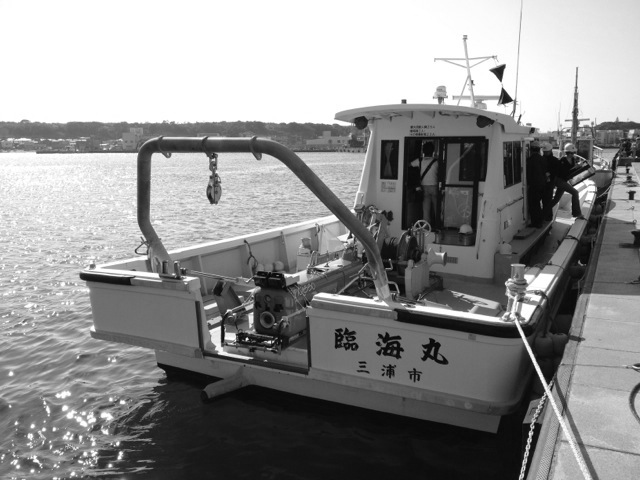

Photo Credit / Dr. James Hunt
BY CHRIS POWERS
SC Staff Writer
Dr. James Hunt, head of the Marine Science Program at ESU, took two weeks off during 2013’s Fall semester to travel to Japan in order to conduct research.
Dr. Hunt spent November 2 to November 18 on the Miura Peninsula in Japan, which has one of the oldest continuously operating marine labs in Japan, called the Misaki Marine Biological Station. This facility is affiliated with the University of Tokyo.
The focus of this research trip was to survey parts of the Tokyo Bay system.
According to Dr. Hunt, “In the mouth of the bay system that goes into Tokyo, there’s a huge underwater canyon and we think that this is a pretty active place.”
This area was of particular interest because of its previous inaccessibility.
“The problem has always been that there is one major shipping lane going in, one major shipping lane going out, and very little space in between,” said Dr. Hunt.
These shipping lanes caused a problem because, as expressed by Dr. Hunt, “We could never take an oceanographic vessel there before because we would be in the way and they wouldn’t allow that.”
This problem was solved by the creation of a new remotely operated vehicle, also known as an ROV, called the Picasso.
This new ROV is approximately the size of a bathtub and even the equipment is relatively tiny in order to fit the requirements imposed by the shipping channel.
Dr. Hunt added, “We were literally sitting in the middle of the only shipping route into and out of Tokyo trying to run our operations.”
This ROV reached a depth of 730 meters, which is the deepest the Picasso has ever gone.
One of the benefits and one of the most impressive aspects of the Picasso, according to Dr. Hunt, is that it “has a single fiber optic cable that tethers it to the ship, which prevents large cables from interfering with larger shipping vessels.”
On this expedition, the research team found many species of primnoid gorgonians (a type of sea fan), a great number of chimeras (ratfishes), shrimps, jellyfishes, hydroids, and a very unusual shark.
Dr. Hunt described what they saw as “new to us,” and that there were “a lot of neat critters that were there all the time, but no one was able to go down and see them because of the shipping lanes.”
When asked what the most interesting thing he found was, Dr. Hunt had three comments.
The first of these concerned the “diversity of sessile invertebrates, such as the gorgonians, hydroids, and the other things that we had seen. You could look at the area and it would seem healthy without a lot of the sedimentation and bacterial mats that you usually see with polluted waters.”
The second comment reflected what Dr. Hunt found to be fascinating about this experience: “An absence of something that this should be a good area for, the elasmobranch eggs. The chimera eggs were absent from what was seen.”
The third most interesting observation made by Dr. Hunt was that they “found a shark that nobody could identify, and we are in the process of figuring out if this is a new species, if it is simply new to Japanese waters, or if it is just the fact that none of the scientists were sharks specialists.”
The pictures of this shark have been sent out to several shark experts and the research crewmembers are awaiting a result.
According to Dr. Hunt, the most significant finding on this trip was that the area was “one of the most pristine areas of Sagami Bay that I have ever seen, and I used to dive there (with the ROV) all the time.”
One of the suggested reasons for this is the high shipping traffic.
Dr. Hunt believes that the high shipping traffic is acting as a deterrent to fishermen, who would fish and dredge the bottom, which in turn helps keep the environment in good condition.
According to Dr. Hunt, “In terms of animals and diversity, it was almost like being on a coral reef, except there were no corals.”
Email Chris at:
cpowers@live.esu.edu
